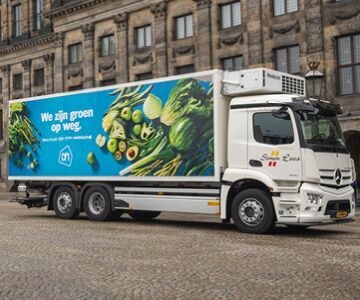Direct store deliveries
Few people have heard of this bakery company, despite its 125-year existence, but millions of people enjoy its fresh products every day. From wholewheat bread to white rolls, and from currant loaves to pastries – everything is produced to order the day before and delivered to the store at night or early in the morning. “We are one of the few suppliers who deliver directly to stores,” says Den Boer. “In fact, this is a huge operation every day. Bread is an emotional product that people go to the supermarket for especially. Our products must therefore be fresh on the shelves when a store opens.”













